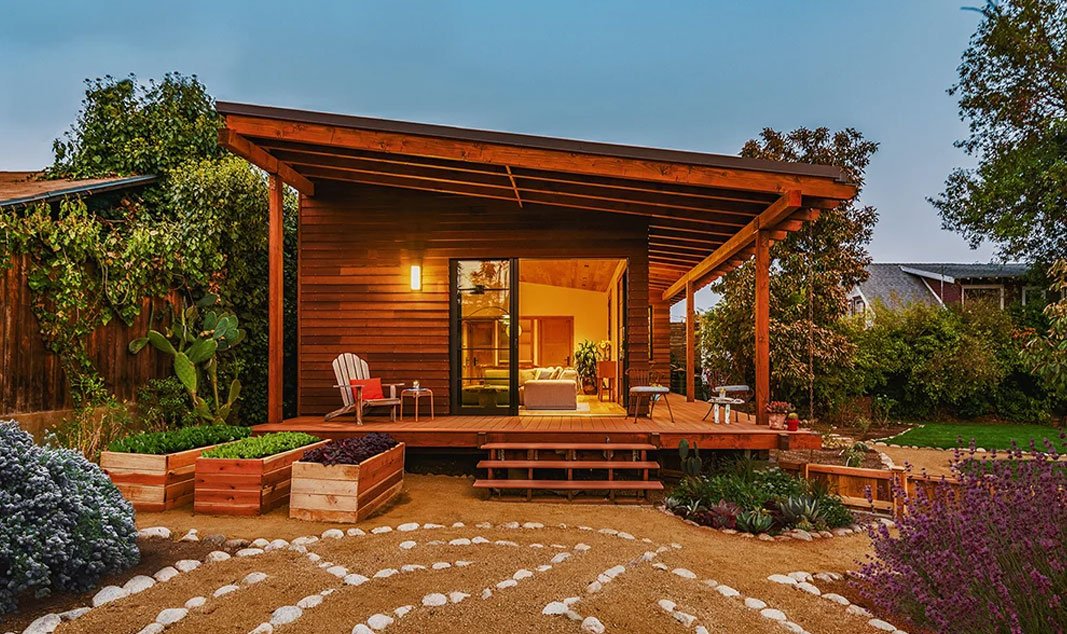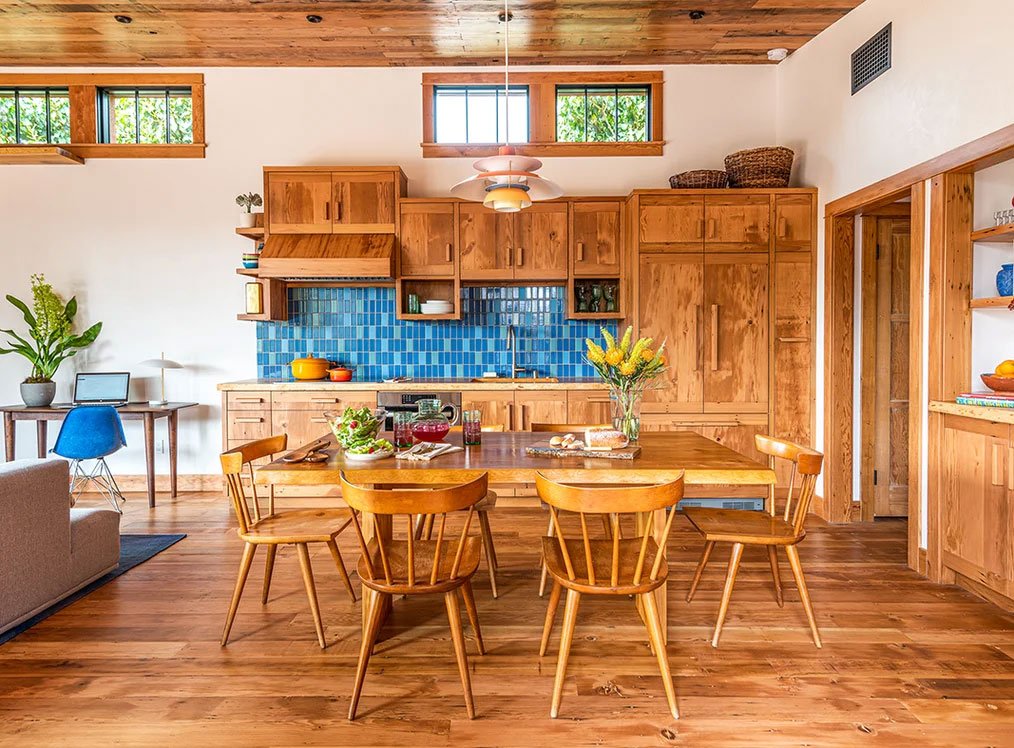Style
Green Building: A Sustainable Backyard Retreat for a TV Writer
“Sustainable design can be beautiful and affordable,” says Steve Pallrand, founder and principal designer of the sustainable design-build firm Carbonshack, citing two of the biggest misconceptions around green building. “It should function for your lifestyle while reflecting your values.”
Just witness the one-bedroom additional dwelling unit he created in late 2020 for a television writer and a musician in Highland Park who were hoping to turn the dilapidated old barn at the rear of their property into a place they could use as a work-from-home office, a music studio and to host friends, family and their parents. Pallrand fabricated a rustic space that fits seamlessly into the low-key vibe of the neighborhood. Its redwood siding, raised footprint and spare lines evoke the serenity of a log cabin in the woods, while its subtle Japanese influence nods to the Craftsman-style main home. “We love the way it blends with the landscape,” says one of the owners, who prefers to remain anonymous to maintain privacy.
Beneath its lean and deceptively straightforward design lies a mean, green, carbon-fighting machine. “The trick is to bring the conversation of sustainability and lowering the carbon footprint into the design process from the very beginning,” says Pallrand. “It’s a ground-up approach that impacts the systems you choose and the design choices you make.” At this property, form follows function, starting with the exterior, constructed by repurposing old-growth redwood that comprised the original structure “The only place you can find that quality wood is in national parks, so reusing it is one of the greenest things you can do,” Pallrand points out.
Some choices, such as LED lights — as well as the solar panels that cover the flat roof (tilted south to maximize the sun) — are typical eco-conscious elements. Others have yet to make their way into the mainstream. A Rheem heat-pump hot water heater, for instance, uses heat-exchange technology instead of gas via pumps which “work like reverse air conditioners,” explains Pallrand, to keep the interior temperate year-round. “While the initial outlay can be expensive, in the long run they’re cost-effective,” continues Pallrand. “You’re weighing the embodied carbon cost of constructing a home against its long-term operational footprint,” though admittedly, building green does not automatically mean saving green.
“The most surprising thing I learned is that reusing old things can be more expensive than using new materials,” the homeowner shares, “but to us, it was worth it to reduce the environmental impact of building. The upside is that, between the solar panels and the insulation provided by the dual pane windows, we’re saving a ton of money.” And helping create a model for a better way in the construction industry, which accounts for 40 percent of worldwide carbon emissions.






